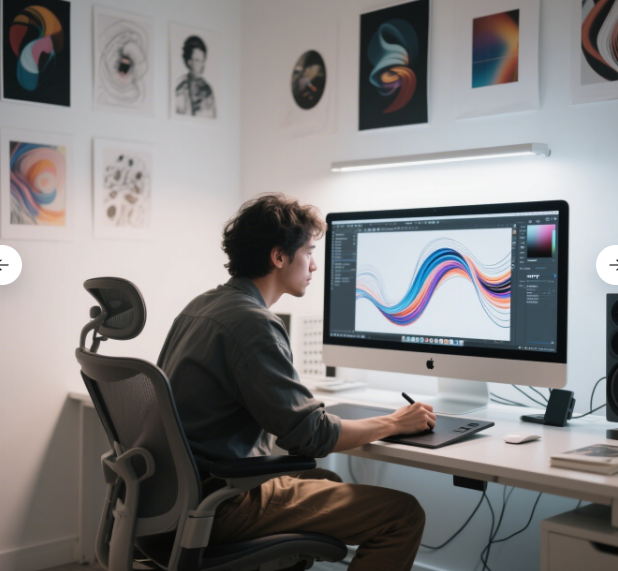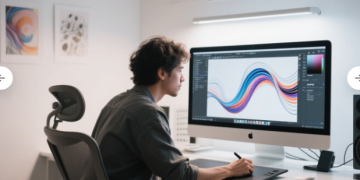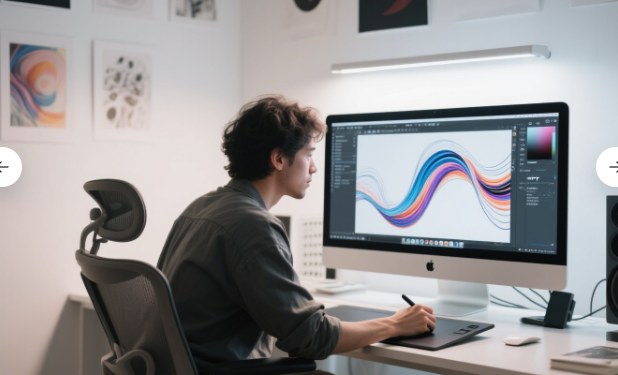In recent years, AI-generated NFTs have emerged as a transformative force in the digital art landscape, blending artificial intelligence with blockchain technology to create unique, algorithm-driven artworks. This fusion not only challenges traditional notions of creativity and ownership but also introduces new opportunities and complexities for artists, collectors, and investors.
The Rise of AI in Digital Art
The integration of AI into art creation has led to a surge in AI-generated NFTs. Platforms like StarryAI and NightCafe have democratized the art-making process, allowing individuals without formal artistic training to produce and mint NFTs. This accessibility has broadened the scope of who can participate in the art market, leading to a more diverse range of creators and collectors.
According to recent reports, the AI-powered NFT generator market is experiencing explosive growth, driven by factors such as improved AI algorithms, growing investor interest, and a shift in consumer behavior towards virtual art. The market is projected to surpass $500 million by 2033, with individual users dominating the space due to the ease of access and user-friendly interfaces offered by many platforms.
Market Dynamics and Financial Impact
The financial impact of AI-generated NFTs is significant. Studies indicate that AI-generated NFTs have contributed to the growth of digital art sales, with sales volume and market value increasing steadily over time. The research highlights a shift in buyer demographics, with younger, tech-savvy investors showing increased interest in AI-generated art as a form of investment.
Furthermore, the global non-fungible token market is projected to grow from USD 36.23 billion in 2024 to approximately USD 703.47 billion by 2034, expanding at a CAGR of 34.53%. This growth is attributed to the increasing adoption of NFTs in digital art, gaming, and collectibles.

Challenges and Ethical Considerations
Despite the opportunities, the rise of AI-generated NFTs presents several challenges. One major concern is the originality and authorship of AI-created works. The use of existing artworks to train AI models has led to accusations of intellectual property infringement, sparking debates about the ethical implications of AI in art creation.
Additionally, the valuation of AI-generated NFTs introduces new complexities. Traditional art valuation depended heavily on the artist’s reputation, historical significance, and the intrinsic quality of the work. However, AI-generated art introduces new metrics, including the rarity of algorithm outputs, complexity of data processing, and the technology’s novelty.
The Future of AI-Generated NFTs
Looking ahead, AI-generated NFTs are poised to play a pivotal role in the evolution of digital art and ownership. The convergence of AI and blockchain technologies is revolutionizing digital art creation, unlocking new opportunities for both artists and businesses. Furthermore, the burgeoning metaverse is creating a huge demand for unique digital assets, making AI-powered NFT generators an indispensable tool for creating and distributing these assets.
As the market continues to mature, it is essential for stakeholders to navigate the ethical, legal, and financial implications of AI-generated NFTs. Establishing clear guidelines and frameworks will be crucial in ensuring that this innovative intersection of technology and art develops in a fair and sustainable manner.
Bitora, as a platform committed to empowering the digital art ecosystem, will continue to explore and support the evolving world of AI-generated NFTs, bringing valuable insights and opportunities to its users.
Author: Alex Chen is a virtual currency and blockchain technology expert with over a decade of experience in the digital asset industry. He has contributed to various publications and is a sought-after speaker at international blockchain conferences.



























